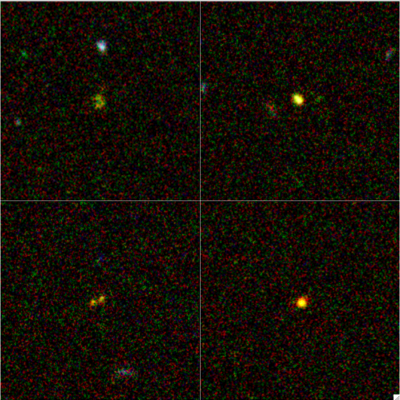Caught in the act

Figure 2
Top: Images of a single galaxy in all the bands used from the three telescopes. The astronomers measured the brightness of each galaxy in each band, plotting them in graphs like those seen here. By comparing the relative brightnesses in each band to models of the stellar make-up of each galaxy (the red lines) they determined the ages of the stars in each galaxy.
RAS/PPARC Press Release Images

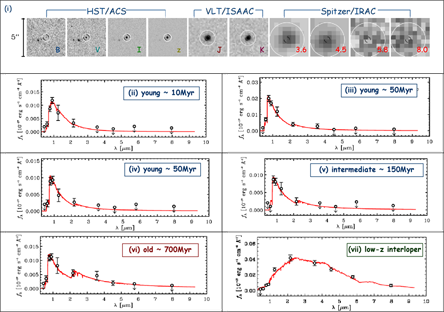


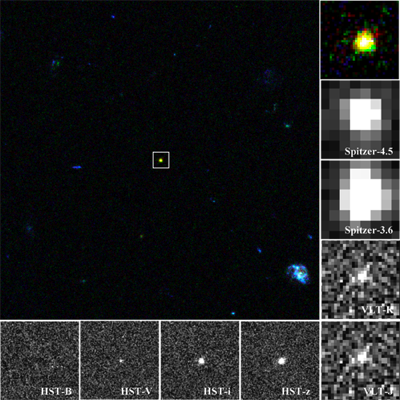

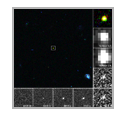

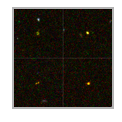
Figure 2
Figure 1
Figure 3
Figure 1
Figure 1 above: Main image. Colour image of the field centered on one of the galaxies in the study. The field is 20 arc seconds in diameter, about 1 per cent the diameter of the full moon. The smaller images around the edge are as follows: Top right is a zoom-in of the galaxy from the main image (1arc second). The others are images of the same galaxy obtained at different wavelengths with the telescopes used in the study (4 arc seconds). The Hubble Space Telescope images (B,V,i,z) are optical images from blue through to red, the ESO VLT images are two near infrared images and the two Spitzer images are mid-infrared images, the longest of the wavelengths used in the study. The main image and the top right blow-up shows that the high redshift galaxy has a yellow colour, very different to the colours of the galaxies surrounding it. It is this difference in colour that allows such distant galaxies to be identified.
Figure 3
Hubble Space Telescope optical images centered on four of the very distant galaxies in the study. Each image has a diameter of 6 arc seconds, or 1/300 the diameter of the full moon. At the huge distances involved to these galaxies, even the world’s best telescope sees these objects as barely resolved “blobs” of light. The next generation ground and spaced-based telescopes will enable us to study these most distant galaxies in far greater detail, allowing astronomers to test predictions made from the results of the current study. Although the galaxies look yellowy-orange to our eyes, the light that we detect from them in these images were originally emitted in the far ultra-violet, at much shorter wavelengths. Over the billions of years it took for the light to reach us, the Universe expanded considerably, stretching the wavelength of the light. So what was originally emitted in the ultra-violet is detected by us in the red part of the optical regime that our eyes are sensitive to.

